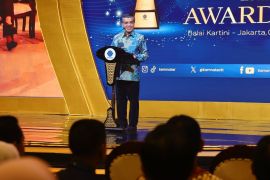Shorea assamica Dyer - a symbolic species of Asian tropical rainforests
Tongbiguan Nature Reserve hosts an exceptionally diverse ecosystem, housing 189 nationally endangered and key protected plants such as Shorea assamica Dyer and Dipterocarpus retusus, along with 215 nationally key protected animals like the Gaoligong Hoolock Gibbon, hornbills, and pangolins.
However, the reserve faces challenges due to its remote geographical location and complex terrain. Persistent issues such as illegal poaching, overgrazing, forest destruction, and the invasion of non-native species continuously endanger the local wildlife. The reserve's capacity for internal scientific research and resource management also urgently requires enhancement to safeguard these invaluable natural resources through more effective technical monitoring and protection measures.
To better integrate digital technology into species protection, H3C and the China Green Foundation have donated nearly 300,000 yuan worth of intelligent equipment to the reserve through the "AI with Love" project. This contribution aims to bolster the reserve's capabilities in monitoring, data collection, and analysis, thereby supporting the staff in undertaking more precise biodiversity protection tasks.
Reserve staff using digital devices to monitor the rare species double-horned rhinoceros
This initiative is in line with the "Kunming-Montreal Global Biodiversity Framework" unveiled at the United Nations Biodiversity Conference (COP15) in December 2022, which sets forth the ambitious goal of protecting at least 30% of the world's land and oceans by 2030. H3C's contribution reflects a commitment to the international consensus on biodiversity protection.
Zhang Yongsheng, head of the Tongbiguan Provincial Nature Reserve Administration, remarked, "The 'AI with Love' project has provided invaluable support to our reserve. The introduction of these intelligent devices will significantly enhance our ability to monitor and research tropical rainforest vegetation and nationally protected animals such as the hoolock gibbon and hornbills. We believe that these advanced technologies will enable us to conduct more efficient conservation efforts and furnish precise data for scientific research."
Moreover, H3C's efforts resonate with the China Biodiversity Conservation Strategy and Action Plan (2023-2030) issued by the Ministry of Ecology and Environment in January 2024. The plan outlines the strategic direction and key tasks for biodiversity conservation in the new era, emphasizing the pivotal role of technology in these endeavors.
Looking ahead, H3C is committed to continuing its focus on biodiversity conservation, progressively augmenting its deployment of intelligent products and digital solutions in this area. Through this project, H3C also aims to inspire more enterprises and societal forces to join the biodiversity conservation movement, thereby contributing to the building of a global ecological civilization.
Source: H3C
Reporter: PR Wire
Editor: PR Wire
Copyright © ANTARA 2024












